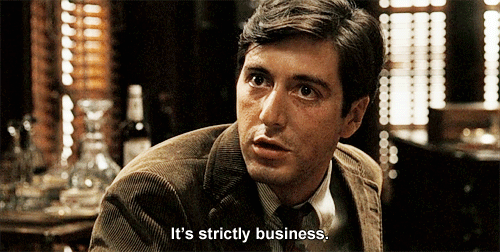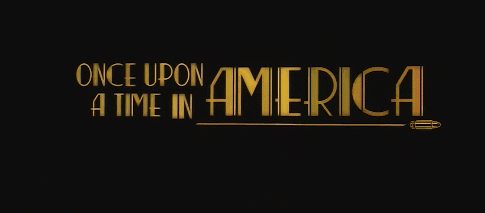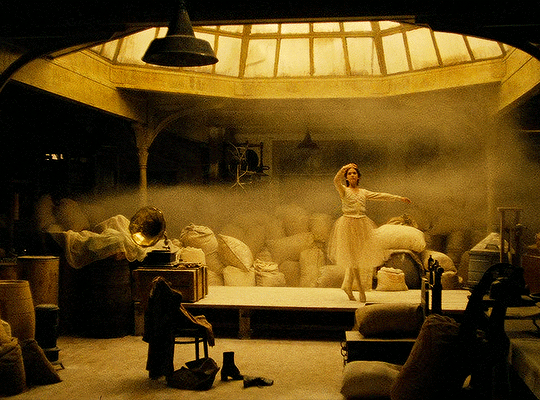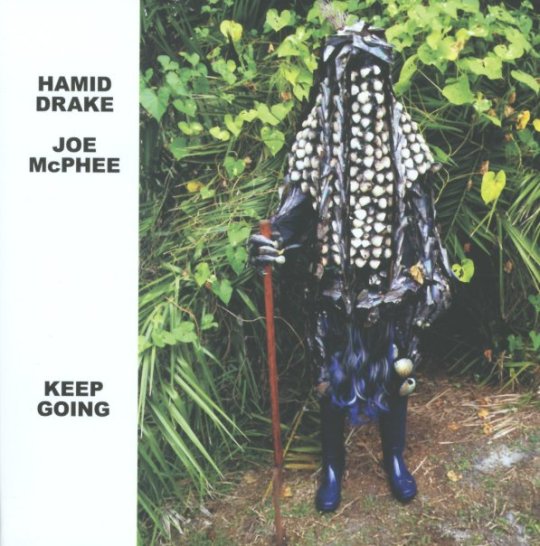#sort of based on the colossus of rhodes
Text
31 (Films) to Life: Once Upon a Time in America (1984) - Recap: Part One
...FOUR HOURS.

OK, technically 3 hours and 49 minutes including credits, BUT STILL...I don’t know if I’m ready for this. But OK, let’s get this started with some backstory, as usual. Once upon a time...in the West...

...there was a director named Sergio Leone. Born in Rome in 1929, Sergio is considered one of the greatest directors of all time, as well as arguably the most influential director of the Western genre. The originator of the "Spaghetti Western" (that is, a Western film made by an Italian director), Leone grew up around film, as the child of a director and silent film actress. Breaking into the industry with low-budget films like The Colossus of Rhodes, he eventually shifted his focus to the Western, taking inspiration from the films of Akira Kurosawa as well. And thus, in 1964...

The Clint Eastwood vehicle A Fistful of Dollars revitalizes the genre, as well as establishing Eastwood as a movie star and Leone as a star director. Leone was in the money now, and followed up Fistful with For a Few Dollars More and The Good, the Bad, and the Ugly, two more insanely iconic Westerns, with Eastwood at the helm and old schoolmate Ennio Morricone as music director and composer. This trilogy, called The Dollars Trilogy or Man with No Name Trilogy after the iconic Eastwood character, would set Leone's career in motion. And hey, if it worked once...

Paramount's calling! They've seen the first trilogy, and they'd like a make a movie with Sergio! Seeing opportunity knocking (as well as the chance to visit the USA and film there for the first time YES THE FIRST TIME YOU HEARD ME), Sergio accepted, and made the film Once Upon a Time in the West, starring Charles Bronson and Henry Fonda. This almost three hour film is still considered Sergio's best...and I will watch it one day.
Anyway, because Leone loved him some sequels, he made another one: Duck, You Sucker!, starring James Coburn and Rod Steiger. Another success, it was an indirect sequel to Once Upon a Time in the West, featuring no characters in common, but set in the same time period and setting. One of his more political films, it speaks on the nature of revolution and its consequences. Sort of a forgotten film nowadays, but well-received critically. It's also his last Western, as he moved onto comedy for a little while, as the world moved past Westerns as a whole, and into...

In 1971, Leone was approached to direct The Godfather...and he turned it down. Now, you may think this was a big mistake on his part, but hold on, because Leone actually had something else in the works at the time. See The Hoods, which was another novel about a mob family had been written by mobster Harry Grey, and it fascinated Leone. Having read it in the 1960s, he'd actually been developing a screenplay for it ever since finishing Once Upon a Time in America. Leone and Grey, mutual fans, met up and discussed Leone's plans: another trilogy. Once Upon a Time in the West, Duck, You Sucker, and the film based on Grey's book: Once Upon a Time in America. The theme? Well...America itself.
The film took over 16 years from concept to release, and brought in heavy hitters Robert de Niro and James Woods to star in it. At the end, Leone's pet project was 10 hours long, edited down by Nino Baragi to a paltry 6. He planned to split it into two parts and release it, but the producers feared failure if that happened. So, they cut it down even more, to 3 hours and 49 minutes. But that was only for Europe. In the USA, well...that was a little too long and two confusing for us, apparently, because the American studios reordered shots in the film, and shortened it to 2 hours. And Leone was PIIIIIIIIISSED.

But in the end, everything worked out. And by worked out, I mean people FUCKING DESPISED the US version, saying that it essentially ruined the film. Instead, the released European version was a smash hit, first in Europe, and then in the USA. Today, that's the version people know, and are able to watch on Netflix! And it's considered one of the best films ever made.
Leone would die 5 years after this film released, legacy firmly secured in the annals of film history. The film would win 2 BAFTAs (Music by Ennio Morricone, of course; and Costume Design by Gabriella Pescucci) and a couple of other awards, but the American cut was recieved SO POORLY, even the Academy Awards didn't cut this movie a break. And that's goddamn saying something, because the movie that won that year was...oh. OH SHIT

Oof. There's a question. Is this as good as Amadeus?
Because Amadeus, if you haven't seen it, is a DAMNED good movie, and swept the Oscars for Best Picture, Director, Actor, Adapted Screenplay, Sound Editing, Art Direction, Makeup, and Costume Design. YEAH. It won 8 Oscars. So, damn, that is a question, isn't it? Is this movie as good as Amadeus? And would it have stolen any Oscars from it? Ooooooh...let's find out!
SPOILERS AHEAD!!!
Recap: Part One

New York City, 1933. A woman enters her apartment at night. On her bed is an outline of a human being, made with bullet holes, like a chalk outline showing the location of a body. It was made by a group of men, looking for a "rat" that the young woman is affiliated with. They shoot her and leave her bleeding on the bed.
The men immediately make their way to beat up and interrogate another man in a gym, beating him to a bloody pulp until he tells them where to find him: Chun Lo's Chinese Theatre. The leader of the group makes his way to the theatre, the backrooms of which are an illegal opium den. In said opium den is our guy: Noodles (Robert De Niro). Laying low, Noodles reads the paper about three bootleggers, recently caught and killed by the feds.

As the phone rings, we flash back to the night those men were found, and find that Noodles was there in the sidelines, watching the authorities bundle up their bodies and take them away. From there, we go back even further, to a raucous party complete with an end-of-prohibition cake and a lot of alcohol. The phone rings this entire time, until Noodles eventually picks up the phone to call a Sergeant Halloran, implying that he was the one to prompt the deaths of those men. Scandalous.

This was unsurprisingly, an opium-fueled fever dream, which is interrupted by a snap back to the present. The men are searching the theatre and menacing its customers (including this uncomfortable scene where a dude uses his gun to touch a woman's nipple; it seems weird out of context, but it's also weird IN context). As the men search for him, Noodles escapes out the back of the theatre, narrowly evading capture.
He rescues the tortured man from earlier, shooting one of the mobsters in the back of the head. Said man tells him that the girl, Eve (Darlanne Fluegel) is dead, prompting Noodles to take a key to a locket in the station, and flee the city with a mysterious suitcase from the locker. From there, he heads...anywhere.

Fast-forward to the future year of 1968, backed by a version of Yesterday by the Beatles. A gray-haired Noodles returns to the city and calls Fat Moe (Larry Rapp), the tortured man from the beginning of the film. The two reunite, and Noodles tells him that he was summoned here by somebody. He takes this to mean that he’s finally been found after running away, and needs to be ready...for something. He also learns that the bodies of his dead friends have been moved, with the destruction of the synagogue graveyard.
It’s also revealed that the suitcase contained nothing when he pulled it out of the locker. This, amongst other truths, are revealed as Noodles looks at a wall of pictures in Moe’s upstairs apartment, where he is to stay for the foreseeable future. He makes his way downstairs, into a backroom, where he stares through a hole in the wall and remembers the past, all the way back to 1918. And through that wall?

Hey, it’s Jennifer Connelly! And she’s playing Deborah, Fat Moe’s sister, and an aspiring dancer. We found out earlier that she’s apparently a big star in the modern year of 1968, so her future is bright. Also, while I’m at it, a young Jeniffer Connelly is, well...a young Jennifer Connelly. You ever see Labyrinth? Her acting is about the same here as it was there. So, not amazing, just saying. Giving me a lot of flashbacks.
A young David “Noodles” Aaronson (Scott Tiler) was watching from this backroom, and stops as Deborah starts to change out of her clothes, which is awkward for all involved. She also KNOWS he’s back there, telling her brother that there was a roach in the backroom. He confronts her afterwards, and she tells him off in the young Jennifer Connelly style (just trust me, it’ll get you thinking of David Bowie’s crotch faster than you’d expect).

Outside, Noodles joins up with his friends, all of whom commit street-level crimes for a local street boss, Bugsy (James Russo). After getting screwed out of a score by a kid named Max (Rusty Jacobs), Noodles returns home to an unpleasant home situation. There’s also an INCREDIBLY awkward sexual encounter with an equally underaged neighbor girl, and GODDAMN is it awkward.
After that, Noodles runs into Max, whose family is moving to Manhattan from the Bronx. Wanting revenge for the stolen score from earlier, Noodles steals a watch from him, only for it to be stolen in turn by a corrupt police officer. From that, the two form an unlikely friendship. Max, in fact, has a camera, which the two use to blackmail the policeman. How? By catching him having sex with Peggy (Julie Bowen) the neighbor girl from before, who happens to be an underage prostitute. Guhhhhhhh.

Max and Noodles convince the cop to act in their service, rather than the service of Bugsy. With their gang of kids, the five plot to start their own street-level organization, away from the influence of Bugsy, and without interference from the cops. This, by the way, is also while both Noodles have their, uh...turn with Peggy. Oh, God, I feel gross typing that, holy shit. However, Noodles is conflicted, as he’s definitely in love with young Deborah. And a short interaction between the two of them during Passover seems the indicate the feelings are mutual. They actually nearly kiss, until, Noodles is called outside by Max.
But as the two are talking, they’re approached by Bugsy and his men, who’ve heard about their plans to go independent. They beat the ever-loving shit out of them both, which also cements their desire to vengeance against the street-boss. It also ruins any chance of romance for Deborah and Noodles, as she understandably sees him as dangerous.

Time passes, and the boys enter a new scheme: bootlegging. This is the era of the Prohibition, after all, and alcohol is a big business. Noodles comes up with a way to hide alcohol in the water, using a clever delayed buoy method. The buoys are thrown in the water, where they sink until salt inside of the buoy dissolves, causing the alcohol inside to float up to the surface. It’s clever! And it works, as the boys get independently wealthy off of the scheme.
However, our child gang quickly runs into trouble, resulting in Bugsy shooting and killing Dominic (Noah Moazezi), who dies in Noodles’ arms. Yeah, uh,,,shit. This results in Noodles stabbing Bugsy to death…and then stabbing a cop that comes to break up the fight. Um. Fuck. Noodles is officially going to jail. Yikes.

Which makes this a great time to pause! Time for Part Two!
#film:once upon a time in america#once upon a time in america#f:once upon a time in america#ouatia#film:ouatia#f:ouatia#sergio leone#robert de niro#1984#1980s films#james woods#elizabeth mcgovern#joe pesci#burt young#tuesday weld#treat williams#crime film#crime movie#crime genre#31 films to life#user365#365days365movies#365 days 365 movies#punishebe
4 notes
·
View notes
Note
one word butterfly go off queen xo suze
hey bestie!! here's a theogony-verse one cooked up just for uuuuu @thequibblah
"This is not real," Lily murmurs for the third time in as many minutes as she stares up at the gigantic, magnificent statue before her. It's Athena in spear-weilding glory, scaled to the size of a god—nearly fifty feet tall, or more. "This is not real."
James laughs, as he's done every other time she's said it. "I can promise you, it is."
"What—" quickly, decisively, Lily clamps her mouth shut to stop herself from speaking. She'd been about to ask, what happened to it, as though James might know that it doesn't survive into the Common Era, and that no historians have ever recorded its existence. He shoots her a quick, confused look, but does not ask about her stumbling.
She clears her throat. "…When was it built?"
He ponders this for a moment, his nose crinkling in thought. The midday sunlight is harsh on her skin but silken on his, and his eyes are some molten shade of gold. Helios, she thinks, inexplicably. The sun god before Apollo; the forebearer of all things bright and beautiful.
"I believe it was finished under Draco," he says, "though I cannot be sure. Record-keeping was…poor."
Lily hums. That's a diplomatic description of Draco's reign if she's ever heard one.
A breeze flutters between them and drags through the fabric of Lily's peplos, making her shiver. They're on the outskirts of the city, where the air is crisp and clean—it was an hour's walk from James's house to this part of Athens, where so many altars and statues lie. He'd described it as the old city, and when she laughed, he looked at her askance.
They spend a few minutes taking in the statue. James bows to Athena and chants a prayer Lily does not recognize: something rhythmic, something chilling. As he raises, the dagger at his hip cuts a sharp glint of sunlight into her eyes, and it is such a visceral reminder of his potential for danger and of how, in the modern day, so many pray for peace; but here he is, kneeling in deference to a goddess of war.
"Shall we return?" He asks her once he turns around.
"Yes, we shall. Thank you for taking me here." She turns toward him fully, and the smile she's been suppressing splashes across her face like the conclusion of a waterfall. A submission to the force of gravity; inevitable. "This is…" haunting, she wants to say, but doesn't. "This is beautiful."
James smiles. "I have always thought so. It is nice to know that the world will always have a reminder of the greatness of Hellas's beliefs."
A lance of guilt pierces Lily's stomach, as though somehow the fact that she knows that he's wrong implicates her in the unfortunate truth. As he looks back once in fondness at the towering Athena, some clawing part of Lily wants to tell him what happens to Greece in the coming years, to give him some leg-up on the crises soon to arrive.
If anyone deserves to know—to escape, maybe, or to prepare more dutifully—it's him.
"It is," she whispers, and she keeps her gaze on the uneven terrain in front of them, lest she slip. Her voice trembles a little too much. Everything she's saying feels like a lie, but the next words especially so: "It is nice to know."
He holds a hand out as they climb down some small cluster of stones.
"Careful," he advises.
She can't tell him. Of course she can't. If she did, she could unknowingly change some fundamental part of the world's timeline without meaning to. The smallest unplanned movement, the subtlest word or warning—it could trigger a butterfly effect that she would be powerless to stop or predict.
"James," she says, and he turns his head toward her, his expression calm and happy. His beauty exists in such measure that she's struck by it, by her proximity to it.
Nothing can come of her thoughts, though, can it? There will be no historical consequence to the way she holds him in her mind.
"Yes, Philomel?"
The statue falls, she fights not to say. The statue falls, and the city-states wage war upon each other, and you die from battle or disease or even old age, and I can't do anything to stop it. The statue falls, and you die, and how am I supposed to miss you when you're not a memory I was ever meant to have?
The words fill her throat but rise no further. She looks at the treeline instead of him, even though he's waiting for her response. The leaves create a pleasant blanket of shade.
In Lily's second year at university, she read an article about the oldest tree in the world for her environmental history class. It was said to be over five thousand years old. It saw civilizations and empires rise; it saw war and famine level them. Its leaves fell in the autumn and were born anew in the spring. Everything, her lecturer had said, exists in cycles. Not just nature.
She realizes that the tree exists somewhere on earth even now, and as she ponders this, something green and malignant burrows in her chest; cruel, baseless jealousy in her bloodstream.
"Nothing," she whispers. "I just wanted to say thank you."
#i made this statue up :)#sort of based on the colossus of rhodes#but not really#one-word prompt#thequibblah#theogony#my laptop corrected thequibblah to the quibbler so i'm really 0 for 2 on tags today fml !
58 notes
·
View notes
Photo

Skill without imagination is craftsmanship and gives us many useful objects such as wickerwork picnic baskets. Imagination without skill gives us modern art.
- Tom Stoppard, Artist Descending a Staircase
Sir Anish Kapoor’s ArcelorMittal Orbit tower was completed in 2012 at a cost of £19 million ($27 million). It was intended to be a permanent lasting legacy of London's hosting of the 2012 Summer Olympic and Paralympic Games, assisting in the post-Olympics regeneration of the Stratford area. At 376 feet (114.5 metres) it became the UK’s tallest public artwork.
London Mayor Boris Johnson put into motion a design competition that was held in 2009 and it called for designs for an "Olympic tower". A 9 panel commission made of the great and the good was set up to recommend to both Johnson and the government. It received about 50 submissions. Boris Johnson had said that his early concept for the project was something more modest than Orbit, along the lines of "a kind of 21st-century Trajan's Column", but this was dropped when more daring ideas were received. Boris Johnson was believed to want something like the Eiffel Tower or the Statue of Liberty what he and the government settled on was something completely different with Turner-Prize winning artist Sir Anish Kapoor in partnership with Cecil Balmond of Arup Group, an engineering firm.

Kapoor said that one of the influences on his design was the Tower of Babel, the sense of "building the impossible" that "has something mythic about it", and that the form "straddles Eiffel and Tatlin". Balmond, working on the metaphor of an orbit, envisaged an electron cloud moving, to create a structure that appears unstable, propping itself up, "never centred, never quite vertical". Both believe that Orbit represents a new way of thinking, "a radical new piece of structure and architecture and art" that uses non-linearity – the use of "instabilities as stabilities." The spaces inside the structure, in between the twisting steel, are "cathedral like", according to Balmond, while according to Kapoor, the intention is that visitors will engage with the piece as they wind "up and up and in on oneself" on the spiral walkway.
The Independent described Orbit as "a continuously looping lattice ... made up of eight strands winding into each other and combined by rings like a jagged knot". The Guardian describes it as a "giant lattice tripod sporting a counterweight collar around its neck designed to offset the weight of its head, a two-storey dining and viewing gallery". According to the BBC, the design incorporates the five Olympic rings.
Upon its launch Johnson said "It would have boggled the minds of the Romans. It would have boggled Gustave Eiffel." Nicholas Serota, a member of the design panel, said that Orbit was a tower with an interesting twist, with "the energy you might traditionally associate with this type of structure but in a surprisingly female form.”
When Anish Kapoor’s commission for the Olympic Park in London was unveiled no one really noticed, as most viewers thought it was still under construction.
Orbit confused viewers for sometime, but when they realised that the twisted metal structure in place was indeed an artwork they were up in arms. It was soon slammed by critics and citizens alike.

Overall reception to Orbit was mixed, but mostly negative. With regard to its potential as a lasting visitor attraction, The Guardian's Mark Brown reflected on the mixed fortunes of other large symbolic London visitor attractions such as the popular, but loss-making, Thames Tunnel; the Skylon structure, dismantled on the orders of Winston Churchill; and the successful London Eye. When plans were first reported for an Olympic tower, the media pointed to a manifesto pledge of Johnson's to crack down on tall buildings, in order to preserve London's "precious" skyline. The Times criticised the idea as a vanity project of Johnson's, with a design "matching his bravado", built to "seal his legacy", surmising it would be compared to other similar vanity projects such as the "wedding cake", the Monument to Vittorio Emanuele II built in Rome, or the Neutrality Arch, a rotating golden statue erected by Turkmenistan's President Saparmurat Niyazov, while comparing Johnson to Ozymandias. Art critic Brian Sewell said "Our country is littered with public art of absolutely no merit. We are entering a new period of fascist gigantism. These are monuments to egos and you couldn't find a more monumental ego than Boris."
The Times reported the description of it being the "Godzilla of public art". In October 2012, ArcelorMittal Orbit was nominated and made the Building Design magazine shortlist for the Carbuncle Cup - an award for the worst British building completed in the past year, which was ultimately awarded to the Cutty Sark renovation.
Jay Merrick of The Independent said that "[Orbit's] sculptural power lies in its ability to suggest an unfinished form in the process of becoming something else", describing how its artistic riskiness elevated it above the banal artworks of the public art movement that have been built elsewhere in Britain's towns and cities. Merrick was of the opinion that it would be either loved or hated, being a design which is "beautifully fractious, and not quite knowable".
Jonathan Glancey of The Guardian described Orbit as "Olympian in ambition" and a "fusion between striking art and daring engineering", and said that, the Aquatics Centre apart, it represented the architecturally striking Joker in the pack, given that the rest of the landscaping and architecture for the Games "promises little to get excited about". He believed it would become a "genuine eyecatcher" for the Olympics television coverage, with its extraordinary form being a "strange and enticing marriage of sorts" between the Eiffel Tower and the un-built early Soviet era Tatlin's Tower, with the biblical Tower of Babel as "best man".

The Times writer Tom Dyckhoff, while calling it "a gift to the tabloids" and a "giant Mr. Messy", questioned whether the Olympic site needed another pointless icon, postulating whether it would stand the test of time like the London Eye and become a true icon to match the Eiffel Tower, or a hopeless white elephant. Suggesting the project had echoes of Tatlin's Monument to the Third International, and especially Constant Nieuwenhuys' utopian city New Babylon, he asked whether Orbit was just as revolutionary or possessed the same ideological purpose, or whether it was merely "a giant advert for one of the world’s biggest multinationals, sweetened with a bit of fun".
Rowan Moore of The Guardian questioned if it was going to be anything more than a folly, or whether it would be as eloquent as the Statue of Liberty. He speculated that the project might mark the time when society stops using large iconic projects as a tool for lifting areas out of deprivation. He questioned its ability to draw people's attention to Stratford after the Games, in a similar manner to the successes of the Angel of the North or the Guggenheim Museum Bilbao. He also questioned the piece's ability to strike a chord like the Angel, which he believed had at least "created a feelgood factor and sense of pride" in Gateshead, or whether it would simply become one of the "many more unloved rotting wrecks that no one has the nerve to demolish". He postulated that the addition of stairs and a lift made Orbit less succinct than Kapoor's previous successful works, while ultimately he said "hard to see what the big idea is, beyond the idea of making something big".
Fellow Guardian writer John Graham-Cumming rejected comparisons to icons like the Eiffel Tower, which had itself not been intended to be a lasting monument, only persisting into public acceptance as art through being useful; he also pointed out the Colossus of Rhodes collapsed within a few decades, and the Tower of Babel was "constructed to glorify those that constructed it." He suggested that a future mayor should reconsider whether it should be pulled down. Questioning its corporate role, he believed that meant it looked less and less like a work of art and more like a vanity project.
Even Sir Anish Kapoor acknowledged the criticism and said of its clunky features,“It’s an object with all its elbows sticking out and it is slightly awkward, but I think I made it for that reason, I wanted it to be slightly awkward.”

After the 2012 Olympic Games, the Orbit tower was used as an observation tower, running at a loss of £520,000 ($884,000) in 2014–15, according to the BBC—or losing up to £10,000 ($17,000) a week in 2014, according to the Guardian newspaper.
Amidst the rising clamour of the costs matched only by the disdainful disinterest in the massive sculpture, something had to be done.
To appease Londoners, ex-London Mayor Boris Johnson brought in Carsten Höller to add a slide to the 376 feet tall artwork, making it the highest slide in Europe.
Kapoor later said he was pushed into the high profile collaboration by Johnson. Kapoor would later say that Johnson’s request “felt to me as if it was turning the whole thing in the wrong direction.”
“It was not always my thinking. The mayor foisted this on the project and there was a moment where I had to make a decision - do I go to battle with the mayor or is there a more elegant or astute way through this?,” he told the Guardian.
“I knew of Carsten’s work so I thought, well, who better than a fellow artist to join up with and make this a positive story rather than a negative… Luckily, and thankfully, Carsten was open to it, so we found a way round this,” Kapoor explained.
Judging by the unforgettable success of Höller’s slide installation at Tate Modern’s Turbine Hall, it’s easy to imagine what made Kapoor click and extend the invitation to the Belgian-born Stockholm-based artist.
“One makes artworks for other reasons than profit,” Kapoor told the Guardian. “I understand this is run as a so-called attraction, which I have problems with personally… I want it to be slightly more highbrow than that, without wanting to be pompous about it. There’s a difference between a fairground ride and art,” he added.

Höller, meanwhile, took a more lighthearted approach, urging people to embrace “the amusement side of it.”
“A child might be here purely for the slide, while the serious art lover might see this in purely formalistic terms. I personally like the confusion, that you don’t know what it is but it still creates a very unique experience,” he told the Guardian.
The ArcelorMittal Orbit re-opened to the public on 5 April 2014. Since then it has done below average business in attracting people to come and visit it or try the slide.
The London Legacy Development Corporation (LLDC), which runs the park where the sculpture is located, released numbers revealing the sculpture’s sizeable debt and a steep drop in visitors. Steel magnate Lakshmi Mittal had provided a £9.2 million ($11.2 million) loan to help pay for the original construction of the sculpture, but this loan has ballooned to £13 million due to the accrual of interest.
Ticket sales to the observation platform and a tunnel slide designed by Carsten Höller were meant to help repay the loan, but low visitor attendance prompted a £58,000 ($70,000) loss in 2018/19 alone. Visitor numbers have dropped from a high of 193,000 in 2016/17, when Höller’s slide was introduced, to 155,000 in 2018/19.
It’s not just an artistic folly but a commercial one too.

It's not wholly fanciful that such artistic scuptural landmarks can help lift places. No one can put a figure on jobs created or investments made in Gateshead thanks to the Angel of the North, but it has at least created a feelgood factor and sense of pride. The Bilbao Guggenheim of 1996, still the archetype of such town-boosting, certainly placed a relatively obscure city at the centre of attention.
Buildings can't do it alone and if people find their attention has been drawn only to a wasteland, they will go away again. The Guggenheim worked because there were also dull practical things in Bilbao such as new transport infrastructure and business parks.
But the most important ingredient of a successful icon is that it works artistically. It has to strike a chord, sound the right note, catch a mood, win hearts and confound sceptics. In other words it has to be aesthetically pleasing because it’s good art made by equally by great craft and graft.
The ArcelorMittal Orbit has become an unloved rotting wreck that no one has the nerve to demolish.
#orbit#stoppard#quote#britain#art#sculpture#modern art#olympics#society#culture#aesthetics#anish kapoor#carsten holler
39 notes
·
View notes
Text
RWBY Volume 8 Chapter 6 Review/Remix
The day finally came, and for some it was far far too late coming. Personally, I think this was a damn good time to get the story we got, but to each their own. It’s time to weave a wicked fairy tale, a twisted Cinderella Story without a happily ever after. Join me, won’t you?~
We open on a sight not terribly unfamiliar this Volume, young Cinder washing and scrubbing a wooden floor in raggedy clothing. A single tear seems to fall among the water, but she continues on. For a split second, we see a woman’s lower half as she walks through this barn setting before getting an exterior shot that yes this is a barn on what looks to be a very sparse farm. We get several quick cuts like this, and from what we see in them it becomes quite clear what sort of life Cinder is living. An orphan ostracized and bullied by other kids, already with a violent streak as she’s shown tackling one of her aggressors rather than passively taking the pain. She’s still fairly weak and starved compared to the others, since she gets pulled off her victim and tossed aside easily, and a closeup of her face shows some gaunt features. All that misery seems like it might turn around when the mystery woman we saw briefly decides she’ll take Cinder. Next thing she or the audience know, Cinder is in Atlas, standing outside a big fancy hotel and staring at the opulence with no small amount of wonder. Immediately, my thoughts shift from Cinderella to little orphan Annie and I gain some small measure of hope. But it cannot last, and the Madame (as she is solely credited despite clearly being our Lady Tremaine in this story) sternly ushers her inside the Glass Unicorn (I’d like to thank the person who helped me read that cursive golden light lettering). Once inside, Cinder is rather awestruck at the lavish lobby and all the happy people she sees within. (Meanwhile I took notice of the sign on the front desk openly declaring that they do not serve Faunus. Hooray for blatant systemic racism...) But she doesn’t have much time to look around, because she’s again brought deeper inside to the kitchen where we meet her new stepsisters. And what a pair, green eyes and light brown hair just like their mother, with devilish smirks of condescension. All Cinder can think about as she’s given her list of grueling chores is the platter of bread and cheese behind the twin devils. Priorities in a palace of plenty like this. You might think to yourself, well now that’s a little harsh for a couple of girls we’re literally just meeting. But don’t worry, they immediately prove how spiteful and cruel they are by laughing at Cinder for asking for food, and laughing even harder when the Madame throws a bread roll for her on the floor she just said was filthy. Great first impressions indeed, and I don’t think there’ll be a direct to DVD sequel to redeem either of them through time travel shenanigans... god I’m old.
We get a montage of Cinder in her new working uniform doing various jobs around the hotel for very little reward or praise. The guests don’t care, her stepsibs give her a slap on the wrist for trying to snack on one of the strawberries she was decorating a cake with... only to turn around and have one of them eat that same strawberry herself right in front of her, and any painful accidents she suffers in the line of duty are met with only disapproval and mocking laughter. She eats guests leftovers, and it seems like she’s the only employee here besides her new family, not that they’re doing much of the work. What really ties this sad montage together is an as of yet unnamed song to that has been serving as Cinder’s leitmotif for years but now has lyrics. Those lyrics, as poor luck would have it, are insults and orders that Cinder must have heard everyday in this life of slavery and misery. “Do your chores, rub my feet, no one said that you could think, no one’s ever loved you, etc.” There’s obviously more of an order and rhyme to them, but I wanted to lay out some of the harshest kickers. We see a particular instance of suffering where she’s cleaning the carpets on the second floor and her sisters start stomping mud right in front of her just to mock her with “You missed a spot~” and give her more work to do. Cinder has taken just about enough now, and her Semblance kicks in for what might be the first time as she starts heating up the wet brush in her hand. She throws it at them in anger and it creates a cloud of steam and possibly smoke depending on how much of that wooden brush she burned. This gets the attention of her stepmother of course, but also that of a mysterious huntsman who had been showing off a new sword in the lobby much to Cinder’s earlier distant amazement. The Madame is none too happy with the scene Cinder has just caused or the fact that she lashed out against her actual daughters. So she gives the poor girl a necklace... with a stone of electric Dust in it. It’s a shock collar, and every time Cinder acts out from this point on, or just doesn’t do well enough for her stepmother’s standards, she will be painfully shocked and forced to apologize with a mantra we’re now all too familiar with. “Without you, I am nothing...”
Next thing we see, Cinder is crawling through a vent into a secret room in the back of the hotel. Based on the tons of furniture covered in sheets back here and the mattress with a couple pillows, I’d say this is what passes as her bedroom with how little fucks her adopted family gives. The Huntsman from earlier is heard being rather pissed that one of his swords is missing, and I get a small amount of sick satisfaction hearing one of the stepsisters panic in the face of his complaints and deliver a trademarked customer service line, “I apologize for the inconvenience”. I hear that every damn day in my day job, and I know how it feels to be where she is. After tormenting Cinder, they deserve to squirm. Naturally, Cinder was the one who took it, but is caught admiring it in her little hideaway by the Huntsman it belongs to himself. In the credits and subtitles his name is revealed to be Rhodes, and the public opinion on him becomes... mixed at best as time goes by. At the very least, here he confronts her without fighting her and disarms her with reassuring words. He knows she’s getting an awful deal here, but hurting these people and running away will solve nothing. She’ll be running for the rest of her life if she did that, never having a place to safely call home. He offers her an alternative, one she seems to pick up on quickly. Becoming a Huntress and gaining her freedom through that official title. But here we get a real sudden kick in the teeth. At this point, Cinder is only 10 years old. No 10 year old should be suffering the way she is, and if I were Rhodes I would try and have the Madame exposed and arrested for her abusive crimes. But we unfortunately don’t know if any child protective services exist that he could go to about this problem, and instead he tries a different approach. He’s not going to be staying here forever, but he’ll be back and forth over the next 7 years, and during that time he’ll train her to be ready for the Huntsman exams. This sounds like a good plan on paper, but then you realize what it means for her. Enduring 7 years of this abuse and pain, on the dangling carrot promise that she can leave one day and finally have some chance at decency. It’s the bare minimum effort on his part, and it makes him feel like a hero without having to actually inconvenience himself and fight for her freedom. She deserves better, but she’s sadly not getting it. Still, she does get training.
We see time pass, he comes and goes, she keeps getting shocked and her resentment keeps growing. She gets older, her uneven pigtails become a short ponytail, and one day he gifts her the sword she had once stolen. She’s earned it, and in a couple more years she’ll be free to use it for her dream job. Too bad this was entirely the wrong move on his part. Cinder has something nice, and the stepsisters won’t stand for that, especially since it’s a dangerous weapon. They tattle to the Madame, and Cinder’s punishment is soon to come worse than ever before. Or so they would like to think. They go into the back to confront her at 11:40, and Rhodes walks in the front door at 11:56. There’s no one to greet him, not a sound to be heard until he gets to the front desk and picks up a distant crash. He gets to Cinder’s room, all too late. The stepsisters lie dead on the floor while Cinder is choking her stepmother to death with her bare hand. She tries in vain to subdue her with the remote for her shock collar, but the pain is just a stinging motivator she’s grown to tolerate. She may have been made to feel like she is nothing without the opportunities given to her by this woman, but now she is EVERYTHING because of what hell she has been through. Cinder snaps her neck and tosses her aside to be faced with her mortified mentor. The clock is striking midnight, and Cinderella did not use her gifts wisely at the ball. But it’s okay, right? Now her tormentors are gone and she won’t have to run anymore, right? Right, Rhodes??? No. Now he’s decided she’s too far gone and he has to fight her, to arrest her for the triple homicide that was most assuredly a mixture of self defense and cathartic revenge. Cinder realizes that even this man she trusted is her enemy, and with the last chime of the clock the spell of her temporary happiness is broken. The two fight, and seem evenly matched for a time, Cinder countering his Semblance of turning his skin to metal by using her own to heat the metal and still hurt him. I should like to point out that this power of his makes for a great layered pun, as it is similar to the mutant power of the X-Men character Colossus, and there is a famous Greek statue of the sun god Helios known as the Colossus of Rhodes. Back to the fight, Cinder temporarily blinds him by throwing a sandbag that he slices into, and in that confusion swipes his second sword so they can both dual wield since he primarily uses a set of maces. She gets a few clean slices in and takes out his Aura, but he bashes her away to hit a chest and there goes her Aura in return. He assumes the fight is over and goes to collect her unconscious body, but she was playing possum and stabs him in the gut with both swords. In his final moments, he lays a hand on her head as if saying he’s proud of her for growing so much. You may have had good intentions, Rhodes, but you were not a very good person and didn’t do enough to call yourself a Huntsman. I can’t imagine what kind of hell a Chaotic Good huntsman like Qrow would have done if he had been the one to find Cinder, but it probably would have been better than the surface level hero work this guy did. As things stand, we know Cinder is heading down the bad path and takes one last sad moment to finally tear her necklace off and cry a single tear up at the moon.
We cut back to present as she wakes up in what I assume is her room aboard Monstra. Emerald is happy to see her awake, but Cinder chastises her for bringing them back to Salem emptyhanded. Em tries to assert that she put her concern for her mentor above the mission and its the sole reason they’re free and alive at all, but Mercury comes in to remind her that a repeat failure like Cinder doesn’t deserve that help. Em tries to stand up for her boss, to say that she was right to go attack Amity because the goodie goodies were up to something and they did a lot to stop it, but Mercury lays the heavy truth bomb on her again. Don’t defend Cinder, you’re not gonna win her love and support because she doesn’t give a shit about you. Cinder shuts them both up and dismisses them until she has need of them, much like the dismissive way Salem treated her a few episodes back. But Mercury got promoted, Cinder’s not his supervisor anymore and he doesn’t have to listen to her. Hearing that takes some wind out of Cinder’s sails, and she’s left alone to stew about this turn of events as Merc tells her everyone is needed on the bridge cuz something big is gonna happen.
Shifting to another room, Oscar is lying on the floor with a black eye and some blood on his lip, and probably a bunch of broken bones and internal bleeding. This poor poor kid... He and Oz are having a discussion about who should be the one in the driver’s seat for these beatings. Oscar sure as hell doesn’t deserve it, but since he’s not the one Hazel is mad at he’s not getting roughed up quite as much as if Oz was present. Oz wants to take over, to try and get them a way out of here, but Oscar thinks they have a golden opportunity if they stay. Oz is initially unsure what that means, but Oscar has some solid reasoning. Salem doesn’t do the fighting herself, she turns people to her side and has them fight her battles. Her spies sow seeds of chaos and discourse among her enemies, and now Oscar can do the same. They can try and talk some sense into Hazel or the kids and turn them against Salem. She won’t be beaten, surely, but she’ll be crippled without her eyes ears and devious hands. No time like the present, as Hazel comes back in for round... idk, maybe 10? Oscar gives Oz control again and Hazel is immediately pissed to recognize that tone of voice again. He assumes Oz had been hiding inside Oscar and forcing the kid to endure the pain instead of him, not realizing it was the reverse and Oscar was being selfless. But rather than argue that, Ozcar tries to get Hazel to see the cruel reality of it all. He won’t deny he has done wrong by this man, but how is Salem somehow the better choice? He should be fighting to stop her and her evils. Hazel stops for a moment, reveals his feelings on the matter. She can’t be stopped, he’s seen that himself. She’s an unstoppable force, and Oz is the worse of the two for knowing this and still sending people to try and stop her. Oz argues that someone has to at least try, that yes she actually can be fought and slowed and steered astray. But if she gets what she wants and gathers the relics... well, he doesn’t get a chance to reveal that much because Salem herself enters the room and welcomes her old love back to the grace of her company. It’s time to bring him to his front row seat for the impending show.
It begins with a show of force and loyalty, all her underlings bowing before her on her throne. Em and Neo are off to the side and Hazel is forcing Oscar to bow too, but Mercury Cinder and Tyrian have all taken a knee right in front of their queen. Good news everyone, Watts presumably got Ironwood’s Scroll working and reported his successful takeover of Penny back to Tyrian and thus to Salem. Both men have proven their value, while Cinder’s rogue stunt has put her worth to the cause in serious question. Just like so many years ago, Cinder starts writhing in agonizing pain, this time inflicted by her own Grimm arm. Good to know Salem’s gift of a new limb was also a way to enforce punishment... But unlike the Madame, Salem claims to blame herself for Cinder’s disobedience. She’s been stifling Cinder’s drive for power and freedom, it’s no wonder she did what she did. She should be giving her chances to grow and rise, and so now she is. Cinder’s new mission is to go free Watts from jail and with his help murder Penny for the Winter Maiden powers. But it will be a challenge to prove herself, because Salem is also sending the Hound for the very same job. Both outcomes will result in Cinder getting the powers and Salem getting the Staff from the Vault, but only one will truly be an earned victory for Cinder and she damn well knows it. Ozcar tries to object, to say getting the Relics will doom them all, but hush now little fool~ You’re too late.
Cutting immediately away from that frightening situation, we get Winter and the Ace Ops flying out over the tundra in search of Penny. Elm is complaining about having to retrieve “broken junk” and how they shouldn’t trust Watts or his technology. Good point about trusting Watts, but we’re well past that problem now. Winter barks at Elm to stop whining and act professional. They pick up a comm signal, and it turns out to be from Jaune warning anyone who can hear it about the Grimm river. They head for the source of the signal, and the two groups cross paths under the most tense of tenses. Jaune gets to business and tries to get these professional huntsmen, public servants of their kingdom, to come deal with this unprecedented threat. But Harriet just wants to know where Penny is and refuses to acknowledge any problem except the one she was sent to deal with, so she blames these three kids who haven’t seen Penny in like 12 hours for whatever danger there is. Thankfully, she shuts up when a tremor rocks all of Mantle. The tremors keep building, even the Grimm take some amount of notice. Then it stops again. Then the biggest one yet hits, and suddenly the riverbed is empty. A geyser of primal Grimm goo blasts up into the side of Atlas, and it’s persistent enough that a big splash of it gets through the Hard Light shields. Out of the goo comes a swarm of centinels, who crawl up to the towers projecting the shield over the Kingdom itself and burrow into the ground around one of these towers. An airship blasts a laser down, but it can only get one target at a time and the rest burrow in. Down plummets one tower, and with it goes the entire shield. It’s like a string of Christmas lights with a single bad bulb, and that’s not a design flaw you want in the first line of defense around a major metropolitan area. As people across the Kingdom, including the team hiding out in Schnee Manor and a for once knocked off kilter General Ironwood, watch on in horror, Salem makes her move. Monstra swoops in and crests beautifully over the edge of Atlas, and then comes crashing down in the midst of the farmlands on the edge of the city with a bellyflop. The colossal aquatic mammal of the air opens its dark maw, and out floods a wave of more grimm sludge. From that primordial ooze arises just about every variety of Grimm we have ever seen with the exception of Kevin, Jim&Randall, Levi, and the Hound. The battle for Atlas has begun, and there are a wardrobe’s worth of white Atlesian military pants to be darkened. And this isn’t even the mid-season finale! So there’s even worse things sure to come!
Can’t wait~
#rwby reviews#cinder fall#cinder's stepmom#cinder's stepsisters#rhodes the huntsman#emerald sustrai#mercury black#oscar pine#hazel rainart#salem#tyrian callows#neopolitan#the Hound#winter schnee#atlas ace ops#jaune arc#yang xiao long#lie ren#weiss schnee#nora valkyrie#ruby rose#may marigold#blake belladonna#general ironwood#jimbo the iron clown#all the grimm#like all the grimm
8 notes
·
View notes
Text
Derek Taylor 2019: Keep Going

Two words coupled by Harriet Tubman and coined into a credo essential for negotiating the human condition. It's also the title of and invocation to a sublime duo album by Joe McPhee and Hamid Drake released this year as rejoinder to their first recorded ten-years earlier. Taking stock of that decade is something we at Dusted did recently and as the New Year arrives it’s an exercise that feels all the more important, particularly in the extra-musical sense of recognizing the folly of where we’ve been as a world and where we really want to go moving forward. As always, music is both balm and adhesive in remembering that no matter how divisive and discouraging everything seems, we’re still all in it together.
Joe McPhee

Seventy-nine-years young and still a human dynamo of energy, empathy, and optimism, the Powerhouse from Poughkeepsie’s been a constant of these retrospective essays for as long as I’ve been writing them. I haven’t done a hard count, but his horns grace at least a dozen releases this year. Duos with Mats Gustaffson (Brace for Impact), Fred Lonberg-Holm (No Time Left for Sadness), and Paal Nilssen-Love (Song for the Big Chief) join the dyad denoted above in delivering dialogues as personal as they are potent. Tree Dancing assembles the super-group of Lol Coxhill, Evan Parker, Chris Corsano, and McPhee collectively and in component combinations with bassist John Edwards on board for a culminating cut, while Six Situations realizes a dream of bassist Damon Smith in teaming him with McPhee’s tenor and now dearly departed drummer Alvin Fielder. The Fire Each Time bundles six concerts of McPhee in the company of the DKV Trio from a 2017 tour that took James Baldwin and John Coltrane as lodestones. Saving perhaps the best for last, Invitation to a Dream comingles McPhee’s pocket trumpet and soprano with pedal steel guitarist Susan Alcorn and old confrere Ken Vandermark in a tripart colloquy delivered in crystal clear sound.
Peter Brötzmann

A year younger and another fixture in my yearly firmament, Herr Brötz has always had ears attuned to the early pioneers of improvised music through the unabashed embrace of Sidney Bechet, Coleman Hawkins, and others. Those unerring affections erode some of the surprise from I Surrender Dear, an album of tenor-rendered jazz standards and originals, but also enhance the overall experience in how literally he makes good on the debt. It’s arguably his best solo album since 14 Love Poems and bolstered further by the focus on a single central member of his reed arsenal. Also of note, Fifty Years After commemorating the golden anniversary of Machine Gun with longtime confreres German pianist Alexander von Schlippenbach and Dutch drummer Han Bennink,
Rob Franken Electrification — Functional Stereo Music (678 Records)

Four-hours of Fender Rhodes heaven recorded in elite Dutch studios between 1972 and 1981 that puzzlingly never found commercial circulation until last year as a six-LP series. The 2019 edition transfers the archive to three-CDs and only rarely flags as Franken’s fonky keys front guitar, bass, drums and a revolving cast of fellow aces fielding other instruments. Economy is the informal edict as morsel-sized originals alternate with covers of tunes by Herbie Hancock, Stevie Wonder, Atilla Zoller, and even Steely Dan. The utilitarian intimations of the title aren’t just lip service. Franken originally envisioned the music as an homage to the muzak strains common to “shopping malls, hotels, elevators, department stores, and airports.” Much of it sounds far better aligned with the kinetic cop and detective pot-boilers that populated television and cinema of the decade.
Brian Groder Trio – Luminous Arcs (Latham)

Keeping a working improvising ensemble together is no minor accomplishment, yet Groder’s been able to maintain one in his name with bassist Michael Bisio and drummer Jay Rosen. This disc joins two previous albums in demonstrating both the depth of the musicians’ bonds and their shared zeal in exploring and capitalizing on them. Any novelty surrounding the particulars of a trumpet-led piano-less trio is fortunately long since lapsed. The precedence allows them to marshal their attention to shaping music that is simultaneously the sum and multiplication of the substantial parts.
V/A — Pakistan: Folk and Pop Instrumentals 1966-1976 (Sublime Frequencies)

Seattle-based Sublime Frequencies weathered a stretch where the “weirdness” quotient of their audio excavations appeared to outweigh accompanying scholarship and attention to edifying annotations. This scintillating compilation suffers no such skew in the balance of carefully sourced sounds and accompanying copy to shore up the context. Sixties rock, specifically surf, is a through-line in the preponderance of reverb-riddled guitars and buzzing Farfisa organ on many of the tracks, but indigenous melodies and rhythms are also frequent fodder for enthusiastic appropriation. Best of all, there’s a pervasive sense of fun to the sequencing that makes it a handy soundtrack for soirees of all sorts.
Jaimie Branch — Fly or Die II (International Anthem)

If her ascendant flight pattern is any indication, death, artistic or otherwise, isn’t even an option for Jaimie Branch. This follow-up to her meteoric (and long overdue) 2017 debut builds organically on previous cosmetic aspects (core quartet, cover art, etc.) while making progressive-pronged politics even more prominent. “Prayer for Amerikkka” doesn’t mince words in proffering a platform of resistance and the musical propellant to keep it confidently airborne. A robust touring schedule and well-earned media attention are only furthering Branch’s designs at getting the sounds into as many ears as possible.
Sam Rivers

The Sam Rivers Archive Series is the brainchild of producers Danas Mikailionis and Ed Hazell. A projected eight-volume celebration of the music of the eponymous composer/improviser/educator/doyen curated from a vast trove left in the care of Rivers’ daughter after his passing in 2011, it’s also probably the jazz news that most set my heart aflutter with anticipation this year. The initial pair of entries, Emanation and Zenith, certainly live up to the promise in presenting clean fidelity concerts by a high profile trio with bassist Cecil McBee and drummer Norman Conners (pre-disco) and a workshop quintet involving tubaist Joe Daley, bassist Dave Holland and the eight-limbed drums juggernaut of Barry Altschul and Charlie Persip. Both discs are essential.
Jimi Hendrix — Songs for Groovy Children (Experience Hendrix)

Not a long-lost Hendrix kids’ album despite what the jejune title might suggest. Instead, it’s four nearly complete concerts from the guitar deity’s iconic New Year’s Band of Gypsies engagement at the Fillmore East in 1969/70. Producer Eddie Kramer largely quashes his invasive impulses in mastering the tapes, leaving the only real minuses to manifest in the occasionally extra-loose interplay and Jimi’s decision to indulge Buddy Miles’ mic access to a regrettably arguable fault. Math done, there’s nothing stopping an instant trigger-pull for true believers, even folks who have it all already in bootleg form.
Ezz-thetics

Fingers remain collectively-crossed that Werner X. Uehlingher will one day decide to write an autobiography of his countless adventures as a stalwart producer of improvised music. Ezz-thetics is just the latest chapter in the future tome’s story arc that started with the founding of the Hat Hut label back in 1974. The new imprint, named after a classic George Russell composition, balances reissue and archival releases with new ones, packing them with branding that memorializes the old while consecrating the new. Discs by Jimmy Giuffre (Graz Live 1961), John Coltrane (Impressions Graz 1962), and Albert Ayler (Quartets 1964 Spirits to Ghosts Revisted) are the marquee name highlights, but the entirety of the imprint’s releases to-date have had their merits.
Stephen Riley

The tenorist is no longer my favorite under-forty plier on the instrument simply because he’s aged out of the bracket. Oleo builds on last year’s transparently veiled Sonny Rollins’ tribute Hold ‘Em Joe by adding the sturdy trumpet of Joe Magnarelli to the equation and turning the referential calendar forward to the saxophone colossus’ collaborations with Don Cherry. It’s a beaut from a brisk beginning sortie on “Ornithology” to lengthy slalom on the Ducal “Don’t Get Around Much Anymore.” Tangerine Rhapsody is technically under Dutch drummer Snorre Kirk’s leadership, but it wouldn’t be nearly the album it is absent Riley’s supple and sagacious involvement.
Milt Buckner & Jo Jones — Buck & Jo (Fremeaux & Associates)

Curious about what makes an individual improviser tick? Duo contexts are arguably the best aperture to gain edification and insight. Even better than solo or ensemble configurations, the dyad distills things down to solo and dialogue. This four-disc, four-hour-plus collection is a remarkable case in point and surprise that it even exists at all given its vintage let alone its scope. Thank French impresarios the Panassie Brothers who invited ur swing organist and ur swing drummer to indulge themselves with only the gentlest of producer-dictated strictures. The results are fascinating, whimsical, bombastic, and above all, endlessly entertaining. An epitome of intimately undertaken jazz tête-à-tête before it was anything resembling a regular thing.
Del Shannon — Two Silhouettes (Bear Family)

Preconceptions can prove obdurate edifices. Prior to my forty-eighth birthday this year I dismissed Del Shannon as one of the disposable princes of bubble gum pop on the rare occasions he entered my consciousness at all. “Runaway” remains an influential song, particularly in its use of musitron organ, but it’s hardly the makings of unassailable genius. Bear Family’s exhaustive single-disc survey levies a much more convincing appeal for the crooner’s embodiment of a nexus of odd congruencies as moonlighting jazzmen conspire with duck-tailed rockers and barbershop harmonists. Dennis Coffey and Hargus “Pig” Robbins show up as sidemen and there’s even an S&M-tinged canticle called “Torture” replete with whip cracks and a Greek chorus of moans, leaving one to wonder what Ward and June Cleaver made of it all?
Sun Ra

Cosmic Myth and Modern Harmonic continue to advance the mantle apparently abandoned by the Art Yard label in keeping Ra-related albums in circulation. The erstwhile Mr. Mystery employed numerous vocalists throughout his career, even contributing his own less-than-stellar (pun intended) pipes to the cause on occasion. None among that eclectic number could match June Tyson, who brought joie de vivre to the lyrical manifestations of Ra’s cosmic-afro-centrism that was at once wholly believable and infectious. Saturnian Queen of the Sun Ra Arkestra does right by her memory by culling an hour’s worth of highlights from a vast and varied recorded archive. Monorails & Satellites (now in three volumes!) and newly minted editions of Pathways to Unknown Worlds and When Angels Speak of Love were also welcome arrivals.
Derek Bailey/Han Bennink/Evan Parker — Topographie Parisienne: Dunois, April 3rd, 1981 (Fou)

The Topography of the Lungs trio in concert and at length with decent sound eleven-years after their initial seismic contributions to free improv. Bailey and Parker weren’t yet at irreconcilable loggerheads but there’s still a galvanizing and palpable tension that suffuses their interplay. Bennink can’t help being anything but Bennink, bashing away one moment and pattering at barely a whisper the next while keeping ears cocked with split-second focus to the contributions his compatriots. Duos combine with solos from Parker sweeten and season an already delicious aural pot.
Fred Anderson Quartet — Live at the Velvet Lounge Volume V (FPE)

Leftfield guest Toshinori Kondo and drummer Hamid Drake were one half of Peter Brötzmann’s Die Like a Dog outfit when this 1994 concert was committed to tape. That take-no-prisoners context allowed his plangent, frenetic, effects-saturated brass free and ferocious rein. Anderson’s outlets didn’t usually involve electronics and its instructive hearing the adaptations to the roiling controlled-chaos within his customary cerulean-hued improvisations. Drake and bassist Tastu Aoki maintain a stout terrestrial tether enlivened by a revolving array of undulating grooves. Extra points earned for incorporating the original Velvet Lounge wallpaper scheme into the production design. Bottom line: I miss Fred.
V/A — Hillbillies in Hell: Tribulations: Country Music’s Tormented Testament (1952-1974) (The Omni Recording Corporation)

Amusing alliterative appellation aside, this series has managed the no-meager-feat of avoiding diminishing returns while mining the same expanse of time over successive volumes. The fifth entry tilts the lens even more sharply toward the sort of fervent tent show revival circuit favored by fictional religious reprobates like Rev. Harry Powell and Elmer Gantry and comes up with a bonanza off-kilter cuts from names both famous (Hank Williams, Louvin Bros., Tex Ritter) and arcane (The Burton Family, Durwood Daily, The Sunshine Boys Quartet). Ernest Tubb’s “Saturday Satan, Sunday Saint” persuasively sums up the ecumenical ethos, but every song exudes its share of sinful charms.
V/A — Sacred Sounds: Dave Hamilton’s Raw Detroit Gospel (Ace)

As a both prolific and preternaturally talented producer, Dave Hamilton’s usual purview was left-of-center soul and funk. Urban (but not urbane) gospel offered a less-publicized commercial side outlet and he brought comparable emphasis on authenticity and creativity to the various acts he championed. This compilation comprises all-killer-no-filler assemblage that lives up to the unvarnished signifier in the title. It’s nearly eighty-minutes of jangly guitars, tambourines, and impassioned sanctifying and proselytizing of all sorts, as suited for Sunday morning as Friday or Saturday night depending on the preferred mood of your personal household. I’ve enjoyed equal fun plying it in both.
Art Pepper — Promise Kept

Laurie Pepper, like Sue Mingus and other jazz widows before her, remains a passionate arbiter and steward of her late husband’s recorded legacy. The title of this box set collecting a singular tributary of Art Pepper’s later career aspirations could just as easily serve as a signifier of that bond. In truth, it’s reflective of a pact the couple made with producer John Snyder and a string of studio sessions largely left unissued during the Pepper’s lifetime. Rivalries real and imagined are revealed across the recordings as the altoist wrestles with his insecurities and the realities of choices made and paid for as a consequence of his addictions and fictions. Straightforward and vital, the music avoids gestalt in remaining consistently strong and emotionally true.
Paul Bley/Gary Peacock/Paul Motian — When Will the Blues Leave (ECM)

The prevailing mystery behind this twenty-year-old concert rests on the reason(s) why the fine folks at ECM left it in the can for so long. I don’t have an answer but rather a simple expression of gratitude that they finally decided to rectify the error and get the sounds out into the world. Bley, Peacock and Motian were already three-decades deep in the periodic associations that quietly helped open chamber jazz to free improvisation when they took to the Swiss stage. The ensuing masterful performance manages to feel simultaneously like three old friends shooting the shit and a trio of improvisatory experts operating at peak collective capacity.
Prince — 1999 (Warner)

Residency in the Twin Cities for the better part of two decades has resulted in many boons, personal and vocational for this writer. As with any life lived, the red side of the ledger has entries, too. Folded among them is the frictional, frayed listening relationship I harbor with the region’s most famous musical export. Nearly three years after his premature passing Prince is still everywhere and everything here. That perpetual, and perpetually irksome, ubiquity is what makes this five-disc+DVD beyond-exhaustive box so refreshing to my patience-tested purview. It contains lots of impressive material from arguably his most creative and questing period. It also has plenty of songs that feel competent but quotidian by comparison. That blend of bliss and banality is as effective a corrective as I can think of to the cult of purple sainthood that persists around these parts.
And as is my habitual wont, 25 more in no hierarchical order… thank you for reading and Feliz Año Nuevo!
Josh Abrams Natural Information Society (Eremite)
Michael Formanek’s Very Practical Trio – Even Better (Intakt)
Charles Gayle/John Edwards/Mark Sanders – Seasons Changing (Otokroku)
Dudu Pukwana/Han Bennink/Misha Mengelberg – Yi Yole (ICP/Corbett vs. Dempsey)
Nat King Cole – Hittin’ the Ramp: The Early Years (1936-1945) (Resonance)
Willem Breuker & Han Bennink – New Acoustic Swing Duo (ICP/Corbett vs. Dempsey)
Whit Dickey & Kirk Knuffke – Drone Dream (No Business)
Mark Turner & Gary Foster – Mark Turner Meets Gary Foster (Capri)
J.C. Heard & Bill Perkins Quintet – Live at the Lighthouse 1964 (Fresh Sound)
Stan Getz – Getz at the Gate: November 26, 1961 (Verve)
Rita Moss - Queen Moss 1951-1959 (Fresh Sound)
Bill Frisell & Thomas Morgan – Epistrophy (ECM)
Marion Brown & Dave Burrell – Live at the Black Musicians’ Conference, 1981 (No Business)
Jon Irabagon – Invisible Horizon (Irrabagast)
Tom Rainey Trio – Combobulated (Intakt)
Joe Lovano & Enrico Rava Quintet – Roma (ECM)
Tomeka Reid Quartet – Old New (Cuneiform)
Johnny Griffin & Eddie “Lockjaw” Davis – Ow: Live at the Penthouse (Reel to Reel)
Takahashi Miyasaka – Animals Garden (Kojima/BBE)
Tiger Trio (Joelle Leandre/Myra Melford/Nicole Mitchell) – Map of Liberation (Rogue Art)
V/A – Jambu: E Os Miticos Sons da Amazonia (Analog Africa)
V/A – Put the Whole Armour On: Female Black Gospel 1940s/1950s (Gospel Friend)
V/A –Alefa Madagascar: Salegy, Soukous, & Soul from the Red Island (Strut)
Horace Tapscott with the Pan Afrikan Peoples Arkestra and the Great Voice of UGMAA - Why Don’t You Listen? Live at LACMA 1998 (Dark Tree)
Duster – Capsule Losing Contact (Numero)
#dusted magazine#yearend 2019#derek taylor#joe mcphee#peter brotzmann#rob franken electrification#brian groder trio#pakistan folk and pop instrumentals#jaimie branch#sam rivers#jimi hendrix#ezz-thetics#stephen riley#milton buckner#jo jones#del shannon#sun ra#derek bailey#han bennink#evan parker#fred anderson quartet#hillbillies in hell#Sacred Sounds: Dave Hamilton’s Raw Detroit Gospel#paul bley#gary peacock#paul motian#prince
9 notes
·
View notes
Text
What Is The God of War Story So Far?
Iconic God of War series anti-hero Kratos has been giving gods and peasants alike a taste of steel for 13 years now, and he doesn't look to be stopping any time soon. While his latest outing is taking a somewhat different direction thanks to the inclusion of his son and all-new elements based around the Norse myths, Kratos' past is still deeply steeped in Greek mythology as well as the blood of all those who have dared to oppose his will. Fans who want to catch up on the tales and legends forged within the God of War series would do well to brush up on some of the many plots and characters featured in the series so far. Fortunately, we're here to help.
God of War Series Plot Overview
It's been eight long years since the God of War series has had a proper full-form release, and as such, the team at Sony have provided a quick video summing up some of the history fans will want to keep in mind before diving into the new adventure.
Where has Kratos been since God of War III? https://t.co/6WGSKH0BS1 pic.twitter.com/trau8l69zt
— #GodofWar (@PlayStation) April 16, 2018
However, we know that some gamers will crave a much more detailed story synopsis, and we're happy to provide. Those who have completed past games in the series will find an overview of Kratos' exploits featured below, but those who haven't played past series entries should know that the information featured beyond this point contains plot details and spoilers for many of the past God of War games.
The Saga Begins - God of War
Kratos begins his tale as a Spartan warrior in service to the gods — specifically the many deities present in the traditional Greek pantheon. During one fateful battle with an overwhelming barbarian force, Kratos called out to Ares, the Greek god of war, with a promise to serve his will if Ares was willing to imbue Kratos with the power to smite his foes. Kratos' wish was granted, but it came at a cost — Ares bound the Blades of Chaos to Kratos' body, forever chaining the man to a fate filled with destruction.
Both blessed and cursed by power unrelenting, Kratos carves a path of fire and destruction throughout the land, killing many foes and drawing the ire of many Greek gods. One such battle lead Kratos to a village where he killed a number of worshipers of Athena, and during the frey, blinded by the red mist, Kratos inadvertently murders his own wife and daughter. The village's Oracle then bound the ashes of his fallen family members to Kratos' body, giving him his signature pallid complexion and serving as a constant reminder of the evil he'd brought upon the world.
Haunted by visions of his past and growing weary from sleepless nightmare-filled nights, the Ghost of Sparta made a vow to serve the other gods in an effort to rid himself of his own personal demons. Throughout the course of the game, Kratos takes on a number of missions for various gods, killing man and beast alike, before Athena ultimately tasks him with killing Ares. The ensuing questline sees Kratos seek out the power of Pandora's Box, the only artifact capable of allowing a mortal to kill a god.
youtube
After tracking down and opening Pandora's Box, Kratos grew in size and in stature in order to find equal footing in the battle against Ares. The two fight for some time, with Ares eventually stripping Kratos of the Blades of Chaos and all resulting magical powers. However, with the newly-acquired Blade of the Gods in-hand, Kratos ultimately manages to kill Ares. In an unfortunate twist, however, Athena and the other gods refuse to rid Kratos of his nightmares. Angered by the gods' cruelty, Kratos casts himself into the Aegean Sea, but before he can drown, Athena plucks him from the water and takes him to Mount Olympus, from where he is given reign as the new God of War.
The Fate of the Gods - God of War 2
The story in God of War 2 sees Kratos returning to a mortal form. After joining up with the Spartan army in an attack on Rhodes, an eagle swoops over the battlefield, drawing Kratos' power away from him and giving life to the Colossus of Rhodes. With his power nearly depleted, Kratos stands little chance of victory; seeing an opportunity for divine intervention, Zeus appears and gives Kratos the Blade of Olympus, a sword bearing the last of Kratos' power, which Kratos uses to fell the statue. Mortally wounded, Kratos watches as the eagle morphs into Zeus, who admits that he devised the plan in order to strip Kratos of his powers. After Kratos refuses a final chance to pledge loyalty to the gods, Zeus strikes him down.
Before Kratos can be dragged into the Underworld, he is saved by the titan Gaia, who informs him of the powers held by the Sisters of Fate, a set of siblings said to wield influence over time itself. From here, Kratos strikes out on an adventure that sees him confronting Typhon, Prometheus, a Kraken, and even some of the more powerful foes from his past. Kratos eventually stumbles upon the sisters Atropos and Lakhesis, the likes of which refuse to offer him their power or services. A battle ensues where Kratos fights with the sisters as well as Ares in a time-shifting conflict.
youtube
Ultimately, the two sisters as well as the third, Clotho, fall, and Kratos uses the Loom of Fate to return to the point in time when he was betrayed by Zeus. Emboldened by knowledge of a future that could come to pass, Kratos uses the Blade of Olympus to subdue Zeus. Before he can kill the god, however, Athena jumps in front of the sword, impaling herself in order to save Zeus. In her dying moments, Athena informs Kratos that he is in fact a son of Zeus, and that Zeus' plot to kill him was borne of the fear that Kratos would eventually usurp his throne, just as Zeus did with his father Cronos. Seeing a potential end to the madness, Kratos uses the Loom of Fate to go back in time and rescue the Titans, the likes of which he brings to the present, and the game ends shortly after Kratos and the Titans begin to climb Mount Olympus, intending to put an end the reign of the Greek gods.
The Fall of Olympus - God of War 3
God of War 3 picks up right where God of War 2 left off, with Kratos riding on the back of Gaia as he and the swarm of Titans ascend Mount Olympus. Poseidon rises from the sea to fend off the attackers but falls at the hand of Kratos, and his death results in a flood that sweeps over the whole of Greece. Zeus at last manages to resist the attackers, pushing Kratos and the Titans off the mountaintop. As Kratos clings to Gaia, she informs him that he was nothing more than a pawn in their grand scheme, ultimately casting Kratos into the depths of the River Styx.
His plot in shambles and his weapons destroyed, Kratos is visited by the ghost of Athena, who informs him that her new spiritual form has granted her insight into truths that were once shrouded — namely that mankind will never flourish so long as Zeus is in power. She gifts Kratos with the Blades of Exile, and the two form a plan to have Kratos extinguish the Flame of Olympus. Kratos strikes out of the Underworld, recovering the Blade of Olympus and eventually killing Hades, which frees the souls of those previously trapped in the realm.
Kratos' path of destruction is tremendous, with the Ghost of Sparta encountering numerous other titans as well as gods like Hermes, who helps him find the Chamber of the Flame and Pandora's Box within it, the likes of which Kratos needs to conquer Olympus. Kratos eventually travels to the Forum to speak with the god Hera, who refuses to help him on his path, as well as Aphrodite, who doesn't care enough to take any sort of action. Only Hephaestus has a plan of action, sending Kratos to Tartarus in order to recover the Omphalos Stone, which can be used to forge a weapon capable of killing Zeus. Kratos finds and slays the titan Cronos, recovers the stone, and gives it to Hephaestus, who uses it to forge a powerful magical weapon. Unfortunately, Hephaestus tries to use the weapon to kill Kratos, resulting in his own demise.
With the weapon in hand, Kratos heads out to the Labyrinth and rescues Pandora, who urges him to break the Chain of Balance so the two may reach Pandora's Box. After finding it, Zeus steps in to defend the box; Kratos and Zeus battle, but ultimately Pandora sacrifices herself to quench the Flame of Olympus. Kratos then opened Pandora's Box only to find nothing inside. Zeus mocks Kratos' efforts, and the two once again do battle. Gaia shows up to kill them both, but their battle is so fierce that Zeus and Kratos wind up fighting within Gaia herself.
youtube
Kratos eventually manages to impale both Zeus and the heart of Gaia with the Blade of Olympus, killing them both with a single blow. Before he can leave, however, the spirit of Zeus strips Kratos of all his weapons, and the two resume their battle once again. During the conflict, Kratos is knocked unconscious, spurring Pandora to pull Kratos into his own mind, where he communes with the spiritual forms of his fallen wife and daughter, eventually finding a way to forgive himself for his past transgressions. Emboldened by his newfound hope, Kratos reawakens, and ultimately manages to beat Zeus to death with his bare hands.
Facing his own mortality, Kratos slumps over in victory and watches as the spirit of Athena leaves. The credits roll, but before the game ends, a post-credits scene shows shows the Blade of Olympus sitting abandoned with a trail of blood smeared on the ground leading away from the weapon.
youtube
By now, players should be caught up with all of the highlights leading up to the latest God of War release. To learn more about Kratos' various exploits, including guides and features for the upcoming PlayStation 4 release, keep it tuned to Shacknews.
What Is The God of War Story So Far? published first on https://superworldrom.tumblr.com/
0 notes